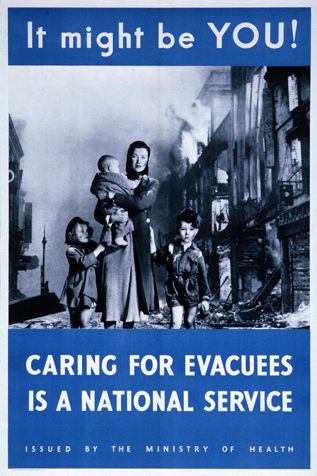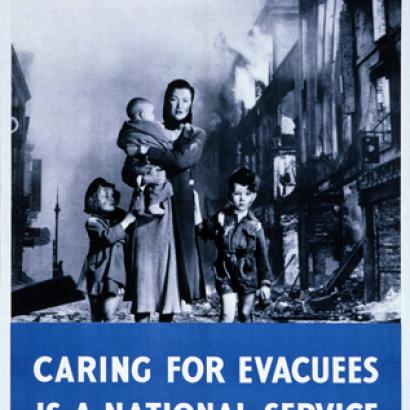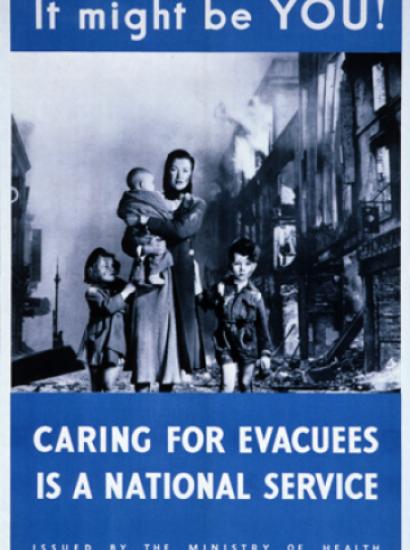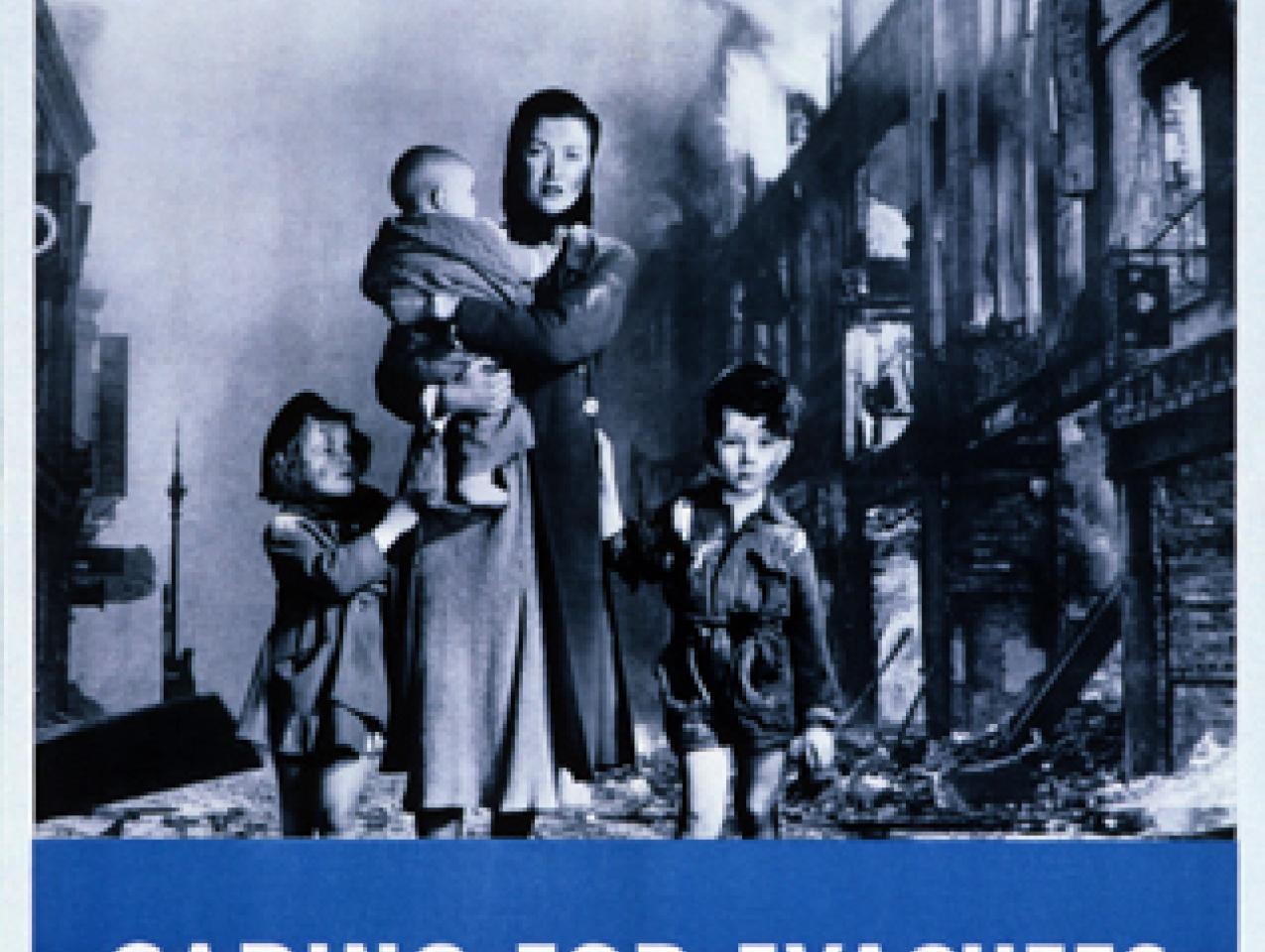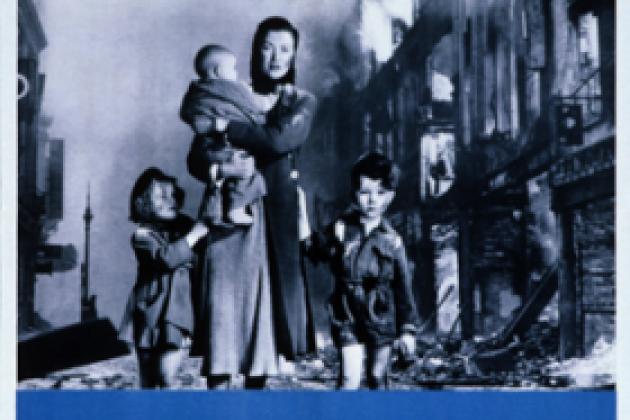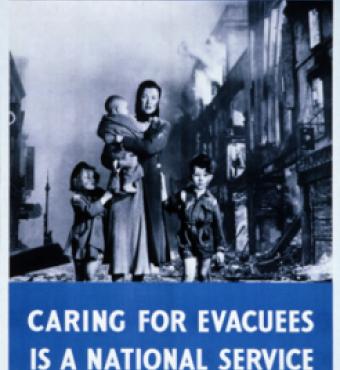In 1907, just four years after the Wright Brothers had flown a few hundred yards across the beaches of North Carolina, H. G. Wells imagined The War in the Air. In Wells’ dark fantasy, the German Empire employs a fleet of airships to preemptively attack the United States, its only potential scientific, industrial, and geopolitical peer. The German target was New York.
Something had dropped from the aeroplane, something that looked small and flimsy. A little man was sprinting along the sidewalk within half a dozen yards, and two or three others and one woman were bolting across the roadway. They were odd little figures, so very small were they about the heads, so very active about the elbows and legs. It was really funny to see their legs going. Foreshortened, humanity has no dignity....
Then blinding flames squirted out in all directions from the point of impact, and the little man who had jumped became, for an instant, a flash of fire and vanished—vanished absolutely. The people running out into the road took preposterous clumsy leaps, then flopped down and lay still, with their torn clothes smouldering into flame....
In this manner the massacre of New York began. She was the first of the great cities of the Scientific Age to suffer by the enormous powers and grotesque limitations of aerial warfare.
The experience of World War I, in which the limitations of air power quickly became apparent, did little to stem the enthusiasm for what was thought to be a revolution in the art of war. Even supposedly professional military literature tended toward a combination, as Phillip Meilinger has written, of “boy’s adventure story and the apocalyptic vision of future war.” Thus Major General James E. Fechet, who had been the chief of the U.S. Army Air Corps, could write in 1933:
It takes no grazing into a crystal ball to visualize a huge trade center such as New York City completely paralyzed if not entirely destroyed, razed and depopulated in a single day by a very few flying machines.... Obviously the airman, riding so high above the earth that cities look like ant hills cannot aim his deadly cargo at armed males. All below will be his impartial target...the women and children and working men, extra-military, are the ones who will suffer. Extended areas will be completely depopulated. We may safely forecast that the next war will be won or lost by air effort.
British Air Commodore L. E. O. Charlton put Fechet in the shade by writing three books on “how air attack would turn urban populations into panic-stricken mobs.” By 1937’s The Menace of the Clouds, Charlton “had so frightened himself with these tales of catastrophe” that he called for complete air disarmament, with the League of Nations commanding an international air force lest any country attempt a Wellsian preemption.
The present day has been equally disposed to see epochal change on the horizon. The “revolution in military affairs” of the 1990s saw in the proliferation of information technologies, leading to a “transparent battlefield” dominated by long-range precision strike systems. In 2001, newly elected president George W. Bush selected Donald Rumsfeld to be his “secretary of transformation” at the Pentagon. In place of an assertion of traditional U.S. national security goals or an assessment of external “threats,” Rumsfeld called for a “capabilities-based approach.” In Foreign Affairs, he explained: “It’s like dealing with burglars: You cannot possibly know who wants to break into your home, or when. But you do know how they might try to get in.”
The failures of the Rumsfeld Way of War in Iraq and Afghanistan have done nothing to quell the impulse to view modern war as a profound departure from the past. Even the terrorists and insurgents—who used the Internet for everything from recruiting to command and control, airliners as guided missiles and car bombs as “improvised explosive devices”—were thought to be uniquely innovative. And the worldwide web itself has become a new “domain” of “cyberwar.”
But nothing has captured the public imagination or excited the futurists more than unmanned systems. The Star Wars series has come to life in the Age of Drone Wars. And like H. G. Wells and the air-power advocates of the early 20th century, today’s drone-power theorists combine hyperbole with analysis. Writing in the Wall Street Journal this past March, Robert Latiff and Patrick McCloskey warned that “America [was] approach[ing] the Robo-Rubicon” and that the increasing use of unmanned systems was “part of a revolution in war-fighting.” David Cortwright lead a debate sponsored by the Cato Institute by declaring that the “accelerating use of drones has opened a new chapter in the history of warfare.” Anna Mulrine wrote of “war’s remote-control future” in the Christian Science Monitor. Even the relentlessly sober Economist predicts that “the future of air power belongs to unmanned systems.”
While there’s no question that unmanned systems, particularly unmanned aerial systems, have played a large role in the counterterrorism campaign of the past decade, it’s critical to distinguish between which features of the drone war are contingent and thus likely to be transitory and which are indicative of a larger trend. And, indeed, what may prove most permanent is the way in which the use of unmanned systems is changing American and Western attitudes about the use of military power. It’s this last question that may contain the real revolution.
The increase in the use of unmanned aircraft by the U.S. military over the past decade has been truly stunning. The total number of drones flown by the four American services numbers in the thousands and there is a huge variety of types. But the flagship and workhorse of the unmanned fleet, without question, have been the MQ-1 Predator and its big brother, the MQ-9 Reaper, both built by the aeronautical branch of General Atomics, which itself was once a division of General Dynamics known for its nuclear research. These two aircraft were originally used as reconnaissance systems, but with the addition of various munitions, beginning with the laser-guided Hellfire missile—an antitank missile developed for the Apache attack helicopter—the hunter also became a killer. The larger Reaper has a payload several times that of the Predator.
The Predator and Reaper combine a particular set of capabilities, but especially the ability to loiter slowly over a small area, that suited the needs of both the U.S. intelligence community and the military as operations in Afghanistan and Iraq became protracted irregular conflicts intertwined with the global manhunt for Osama bin Laden and other senior terrorist leaders. The Obama Administration, always looking to emphasize counterterrorism over counterinsurgency, turned to drones in an even bigger way. By the end of 2011, the U.S. Air Force had established a requirement for 240 drone “orbits” or “CAPs”—that is, unmanned “combat air patrols”—each consisting of four Predators or Reapers. Taking into account spares, losses and maintenance requirements, the total would exceed 500 aircraft.
The Air Force also has built a number of larger drones with longer range and more sophisticated capability. The most prevalent of these is the RQ-4 Global Hawk, but there has also been a rapidly evolving family of long-range, low-observable “Tier III” unmanned aircraft, the RQ-3 “Dark Star,” the RQ-170 “Sentinel” (which crashed in Iran in December 2011), and now the RQ-180, the subject of much speculation in the aviation and defense press. The need for these Tier III aircraft also points out one of the critical limitations of the Predator and Reaper. They cannot survive in “contested” air space, in the face of functioning—let alone sophisticated—modern air defense systems. Thus, as the mission in Afghanistan, in particular, winds down, the Air Force and the other services have an unbalanced fleet, with far too many low-end drones and not enough high-end ones of the sort that would be most useful for operations in East Asia, for example.
Current drone operations demand clear airwaves and clear near-earth space as well as clear skies. Even the most sophisticated and stealthy unmanned aircraft are controlled from command centers such as Creech Air Force Base in Nevada. Video and other signals sent by the drones must be relayed—mostly by satellite—to the center and instructions, including firing instructions, back to the aircraft. Already these signals are subject to “latency” because of the great distances involved, and the satellites themselves are vulnerable to electronic warfare, dazzling, or kinetic anti-satellite weapons.
In sum, the cost and effectiveness of drone operations is a much more complex equation than enthusiasts care to consider. The cost of a Predator is indeed a fraction of an F-16 or an F/A-18, but so is its utility. Global Hawks are more expensive than these “fourth generation” planes, and the costs of the Tier III drones are probably equal or greater than a “fifth-generation” F-35. Developing an unmanned capability—not only an air vehicle but the network to operate it—that would counter the kinds of “anti-access” or “area denial” challenges posed by China’s military modernization is years and at least tens of billions of dollars distant. The U.S. armed forces have developed a dominant drone force for the wars it’s trying to end. It’s not clear that the legacy fleet can be easily adapted for use against an al-Qaeda that’s growing and metastasizing, and it’s certainly a wasting asset in more challenging technological scenarios. The revolution hasn’t happened yet.
Nonetheless, the United States has become dangerously addicted to the Unmanned Way of War. While the number of drone strikes in Pakistan has gradually declined from the high point of 2010, the underlying attraction of a technology that combines seeming precision and low-risk, particularly to American military lives, is understandable. To some, this reduction in risk sparks fears about the dehumanization of combat. “When robots rule warfare, utterly without empathy or compassion,” argue Latiff—a retired major general—and McCloskey, “humans retain less intrinsic worth than a toaster—which can at least be used for spare parts.” A UN special rapporteur on the subject divined “a ‘PlayStation’ mentality to killing” that would transfix a “callous” public with dreams of “costless warfare.” Yet if anything, the use of unmanned systems, at least by the United States, has made war less bloody, requiring less and less killing. As Joshua Goldstein, author of Winning the War on War: The Decline of Armed Conflict Worldwide, observes, “Armed drones now attack targets [such as those in Pakistan] that in the past would have required an invasion with thousands of heavily armed troops, displacing huge numbers of civilians and destroying valuable property along the way.”
“Less bloody” does not mean “more effective.” Drones may make the conduct of war more pleasant for Americans and Westerners, but it’s not clear whether they make war sufficiently unpleasant for those on the receiving end. And to the degree that war remains an act of violence to compel our enemy to do our will, drones have not yet proved to be a decisive or revolutionary form of violence.







